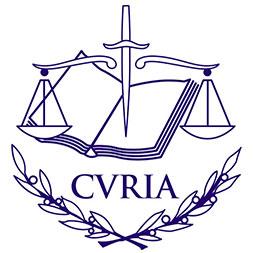Introduction
Cybersecurity is a critical concern for public institutions across Europe. With the increasing reliance on digital technologies and the rise in cyber threats, it is essential for these institutions to address cybersecurity issues effectively. In this article, we will describe how to approach cybersecurity issues in a step by step manner and who are supposed to be the audience.
Understanding the Cybersecurity Landscape
Before addressing cybersecurity issues, it is important to have a clear understanding of the cybersecurity landscape. This involves identifying the potential threats and vulnerabilities that may affect public institutions. Common cybersecurity issues include data breaches, ransomware attacks, phishing attempts, and insider threats.
Public institutions should carry out comprehensive risk assessments in order to obtain an overall view of the cyber security scene. Such evaluations must specify which assets need protecting, evaluate the possible risks as well as their impacts and identify what measures are already in place.
Developing a Cybersecurity Strategy
Once the cybersecurity landscape is understood, public institutions can develop a comprehensive cybersecurity strategy. This strategy should outline the steps and measures required to mitigate the identified risks and protect the institution’s digital assets.
The cybersecurity strategy should include the following key elements:
- Governance and Leadership: Clearly define roles and responsibilities for cybersecurity within the institution. This includes appointing a cybersecurity officer or team and establishing a governance framework, with clearly defined tasks.
- Security Policies and Procedures: Develop and implement robust security policies and procedures that address the specific needs and challenges of the institution. This includes password policies, data handling procedures, incident response mechanisms, and staff training.
- Security Awareness and Training: Teach employees about cybersecurity best practices and raise awareness about potential threats and risks. Periodic training programs and awareness campaigns can help employees understand their their part in keeping a secure environment..
- Technical Controls: Implement and enforce technical controls such as firewalls, intrusion prevention systems, intrusion detection systems or encryption to protect the institution’s network infrastructure and data. Also vulnerability scanning should be performed at regular intervals plus penetration testing so that weaknesses can be detected and addressed promptly.
- Incident Response and Recovery: Develop an incident response plan that outlines the steps to be taken in case of a cybersecurity incident or attack. For example, it involves reporting incidents, identifying who is responsible for investigating them as well as planning how to recover from an attack.
- Collaboration and Information Sharing: Public institutions should collaborate with other organizations and share information about cybersecurity threats and best practices. This can help in staying updated about the latest threats and learning from the experiences of others.
Addressing Cybersecurity Issues
Once the cybersecurity strategy is in place, public institutions can start addressing the identified cybersecurity issues. This involves implementing the measures outlined in the strategy and continuously monitoring and evaluating their effectiveness.
Some key steps for addressing cybersecurity issues include:
- Implementing Security Controls: Public institutions should implement the technical controls identified in the cybersecurity strategy. This may involve deploying firewalls, antivirus software, and intrusion detection systems, as well as ensuring regular software updates and patches.
- Training and Awareness: Ensure that employees participate in regular training on cybersecurity so that they can know about the latest threats and how to handle them. Some of these sessions may involve learning how to identify phishing emails, creating strong passwords or reporting suspicious activities.
- Monitoring and Incident Response: Public institutions should have a monitoring system that will enable them to detect and respond to cybersecurity incidents. This may involve implementing security information and event management (SIEM) tools and establishing a dedicated incident response team.
- Regular Assessments and Audits: Conduct regular assessments and audits to evaluate the effectiveness of the implemented security measures. This can help identify any vulnerabilities or gaps that need to be addressed.
Whom to Address Cybersecurity Issues
Various stakeholders both from within the institution and from outside its borders need to address cybersecurity issues in public institutions. These include:
- Senior Management: The institution’s senior management has to play an active role in dealing with cyber-security issues. They should provide necessary resources and support for implementing security measures as well as ensure that cyber-security is given appropriate importance.
- IT Department: The IT department plays a crucial role in implementing and managing the technical controls required for cybersecurity. They are responsible for maintaining the institution’s network infrastructure, implementing security patches, and addressing incidents.
- Employees: All employees within the institution are important in ensuring cyber-security. They should follow the established security policies and procedures, attending training sessions among other things that can help them understand what needs to be done, and report any suspicious activities.
- External Partners: Public institutions should collaborate and work together with external partners, such as cybersecurity experts and other organizations, companies specializing in computer security and research, academic and university institutions to address cybersecurity issues. This can involve seeking external expertise for risk assessments, conducting joint training sessions, and sharing information about threats and best practices.
Conclusion
Cybersecurity issues in European public institutions require a systematic and collaborative approach. By understanding the cybersecurity landscape, developing a comprehensive strategy, and addressing the identified issues, these institutions can enhance their security posture and protect their digital assets. It is essential for all stakeholders, including senior management, IT departments, employees, and external partners, to work together in addressing cybersecurity challenges effectively.

